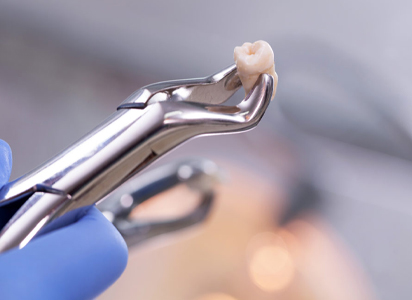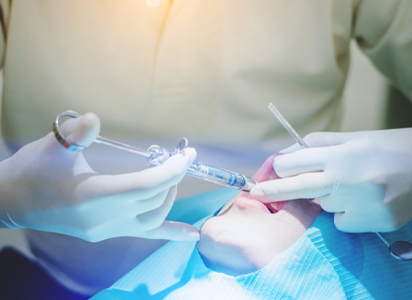Extraction of Teeth
The main goal of modern dentistry today is the prevention of tooth loss. The loss of a single tooth or multiple teeth can have a large impact on your dental health and appearance. All possible measures should be taken to save your teeth. However, in some situations, once the examination, x-rays and history have been done, the dentist may find it in the best interest of the patient to extract the tooth. Teeth require extractions for a number of reasons:* Abscess or infection* Heavy decay not allowing for restoration* Advanced (gum) periodontal disease* Crooked or overcrowded teeth* Impacted teeth* Fractured (broken) teeth or roots


Extractions can be either termed “simple” or “complicated”. An extraction is usually considered simple if there is enough tooth structure above the bone to grasp onto, making its removal very easy. A simple extraction involves loosening the tooth from its bony socket using forceps and or elevators, and removing the tooth from the bone. There is minimal trauma to the surrounding tissues and area. Most patients will experience little or no discomfort with a simple extraction.
An extraction is usually considered complicated if a tooth is fully or partially covered by bone and soft tissue, or if a tooth has deteriorated so much by decay or large restorations that very little tooth structure remains. In these situations, there is not enough tooth structure to grasp onto, making the extraction procedure more difficult. A complicated extraction may involve reflecting gum tissues to expose the tooth and surrounding bone. Bone removal may also be needed to expose the tooth and gain access to the area. Sometimes a tooth needs to be sectioned (cut into pieces) to allow its complete removal. In this situation, stitches are generally required. Patients will usually experience some postoperative discomfort for several days following the extraction, such as tenderness of muscles, swelling or bruising. Most of this can be controlled with pain medication prescribed by your dentist and a list of postoperative instructions. Teeth may also be considered for extraction if they do not function or do not assume their proper position in the arch. Wisdom teeth are the most common teeth to be extracted and generally fall under the “complicated” category.